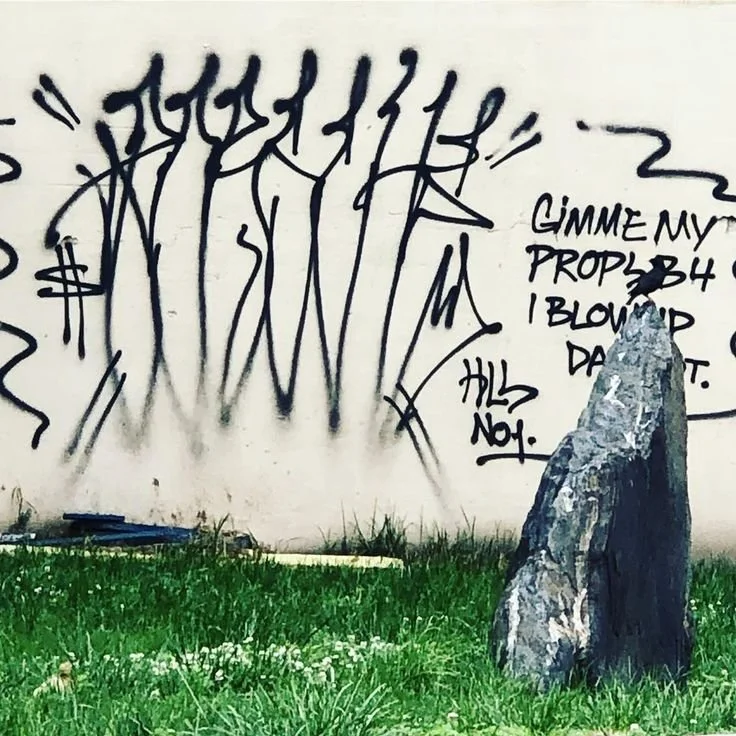5 Types of Graffiti Tags Explained
The 5 Most Iconic Graffiti Tag Styles from Around the World
Graffiti is more than just spray paint on walls; it’s a visual language, a cultural statement, and a unique form of self-expression. Around the globe, regional graffiti styles have evolved into distinctive art forms, each carrying its own history and culture. In this guide, we’ll break down five of the most iconic graffiti tag styles that have shaped the scene, from the intricate Philly handstyle to bold New York tags. Whether you’re learning how to do graffiti tags for the first time or looking to refine your skills, these styles offer a blueprint for mastering the art.
1. Philly Handstyle
The Philly handstyle is one of the most recognizable and respected tag styles in the graffiti world. Known for its tall, flowing, and sometimes overlapping letters, this style packs a ton of personality into a tag. To the untrained eye, it might look like wild scribbles, but experienced writers see a perfect balance of style and structure. The best Philly tags maintain the underlying alphabet while pushing creativity with interlocking strokes and clever use of negative space. Love it or hate it, the Philly handstyle has inspired graffiti writers across the globe to develop their own signature twist.
2. São Paulo’s Vertical Giants
In São Paulo, Brazil, graffiti takes to the skies literally. Local writers developed a tall, narrow tag style with dark black angular letters, often stretching stories high on buildings. Crews even use extension poles to reach impossible spots, turning tagging into a daring, high-stakes mission. While this style shares some visual similarities with Philly tags, its scale and bold vertical placement make it unmistakable. Originally born out of political slogans in the 1940s, São Paulo’s towering tags have evolved into a unique graffiti tradition that pushes the boundaries of visibility and risk.
3. Cholo Style – Old English on the Streets
From the neighborhoods of Los Angeles comes Cholo style, a calligraphic tag rooted in Mexican-American culture. Originally used by gangs to mark territory, it evolved into an artistic script characterized by sharp serifs, angular flourishes, and an old English influence. Think dramatic swashes and precise curves, a style that looks just as comfortable on a wall as it does in tattoo art. While it’s deeply tied to LA’s cultural history, Cholo style remains a respected and influential form of graffiti lettering.
4. Paris Script – Fine Art Meets Street
Paris graffiti in the 1970s took inspiration from New York but evolved in a way that reflected the city’s fine art traditions. Early Paris tags leaned heavily toward script-style writing, often clean, elegant, and influenced by the local art scene. While not as visually radical as Philly or São Paulo styles, Paris tags demonstrate how graffiti can adapt to its cultural environment. By the mid-1980s, Parisian crews were experimenting more with unique lettering, eventually developing their own flavor while still honoring their fine art roots.
5. New York Originals
When most people think of graffiti, they think of New York tags, throwies, and pieces. Starting in the late ’60s and early ’70s, writers like Taki 183 pioneered the modern tagging movement by marking their names across the city, especially on subway trains. The mobility of the trains turned local tags into moving billboards, sparking competition and rapid stylistic evolution. From quick chisel-tip marker tags to bold, bubbly throwies, New York styles became the foundation for graffiti culture worldwide. This is where graffiti tagging as we know it truly took off.
If you're unsure where to start or how to avoid common mistakes, check out our graffiti fundamentals book available online; it’s packed with real lessons and photos to guide your development as an artist.
Grab a digital copy here: Ultimate Graffiti Guide Book Part 1: Fundamentals






